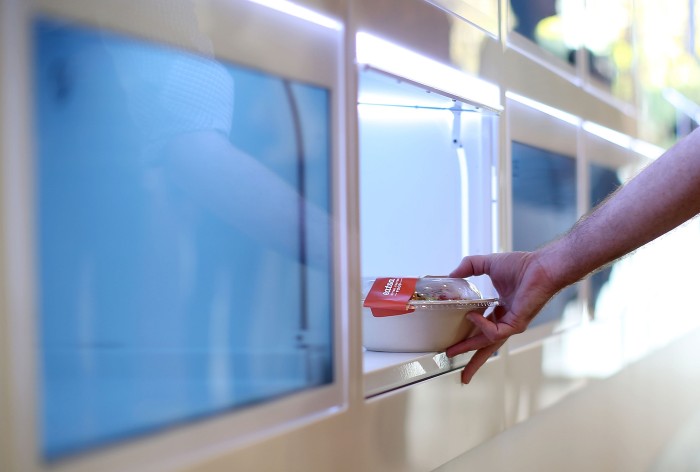Technology Is Eating Up Restaurants
Hungry? If you don’t work at a tech company with a swanky staff cafeteria, you might find that Silicon Valley’s making it a little harder to sit down to a bite.
A recent report by the New York Times indicated that restaurants are shutting down apace in Silicon Valley. The problem, it seems, has been brought about the local tech industry: the area’s rising rents make margins tighter, while the likes of Facebook and Google have been poaching cooks and dishwashers in droves to staff the kitchens that provide their employees’ meals. Mom-and-pop restaurants can’t offer the pay or perks of a tech giant, so there’s a gradual hollowing out of the industry, leaving just fast food or fine dining behind.
Silicon Valley’s influence is being felt in other cities, though, too. Eater has observed a new trend that’s being facilitated by technology, in the form of restaurants without dining rooms. In a bid to overcome high rents, some cooks are setting up kitchens that will only deliver their food to a person’s home. Diners order using a custom app, or via an existing service like Seamless or Grubhub, and the food arrives at their door.

While home-delivered food isn’t a new idea, the concept of high-quality delivery-only outlets is. The idea seems to be gaining traction, too. The culinary visionary David Chang, who set up the Momofuku chain of restaurants, has opened his own virtual restaurant, called Ando, in New York City. Bloomberg went as far as suggesting that his business model “could save restaurant dining.” Though Eater does caution that the future of such establishments is far from guaranteed—not least because issues like quality and marketing are harder to deal with when the diner is at a distance.
Even if restaurants stay open and maintain their dining rooms, though, automation is increasingly set to affect staffing. Restaurants such as London’s Inamo use an interactive table to order food (as well as adjusting the table’s lighting or booking a taxi home), reducing demand for waiters that need to make a note of your choices. And San Francisco’s quinoa restaurant Eatsa goes a step further: the front-of-house experience is fully automated, so there’s not a waiter in site. Many more restaurant jobs will be gobbled up by robots in the future.
Clearly the food serving industry isn’t about to leave us: we all need to eat and it seems unlikely that we’ll put down our burgers and sushi in favor of Soylent anytime soon. But technology does appear to be unsettling the norms to which we’ve become accustomed. Something to chew on, at least.
Read more: New York Times, Eater, Bloomberg, “How Technology Is Destroying Jobs,” “Fun With Food”
Keep Reading
Most Popular
Large language models can do jaw-dropping things. But nobody knows exactly why.
And that's a problem. Figuring it out is one of the biggest scientific puzzles of our time and a crucial step towards controlling more powerful future models.
How scientists traced a mysterious covid case back to six toilets
When wastewater surveillance turns into a hunt for a single infected individual, the ethics get tricky.
The problem with plug-in hybrids? Their drivers.
Plug-in hybrids are often sold as a transition to EVs, but new data from Europe shows we’re still underestimating the emissions they produce.
Stay connected
Get the latest updates from
MIT Technology Review
Discover special offers, top stories, upcoming events, and more.